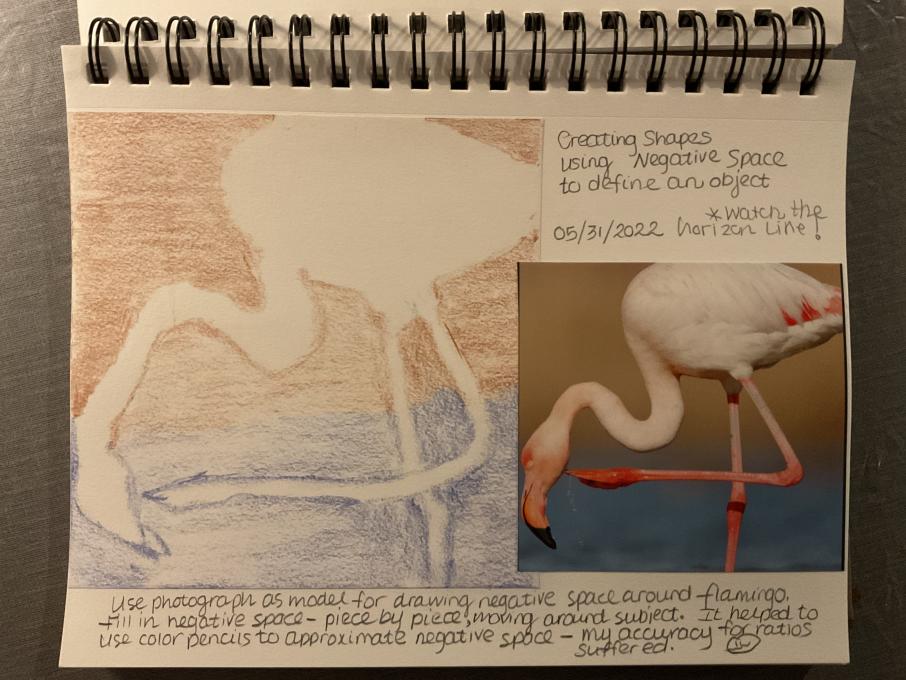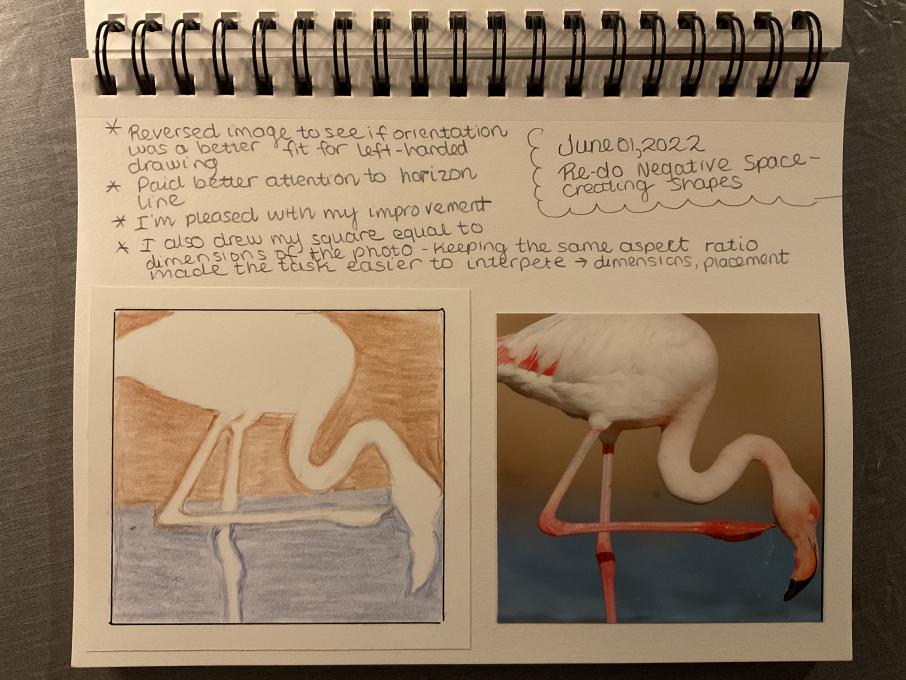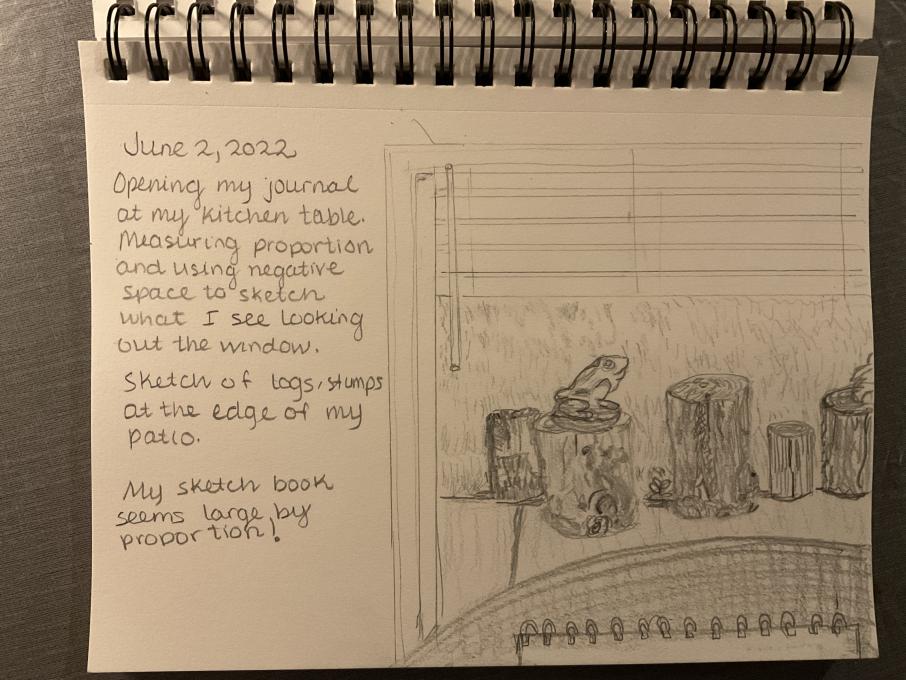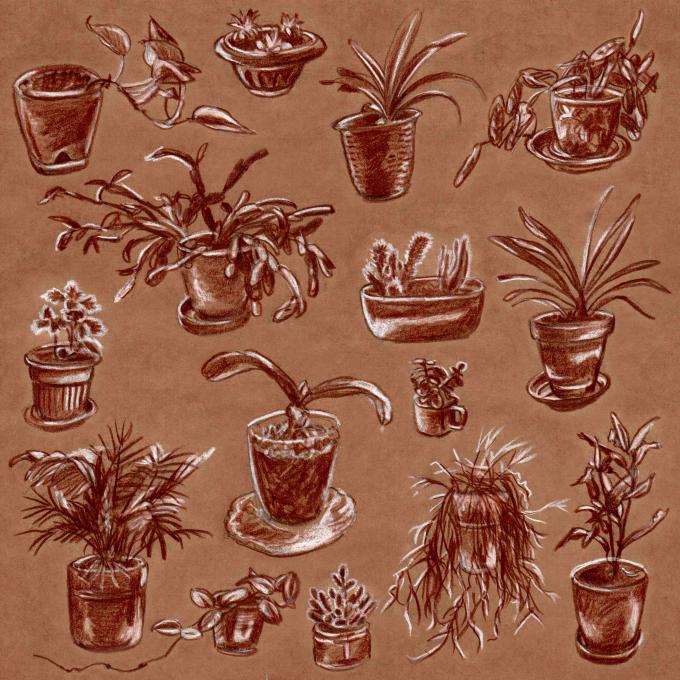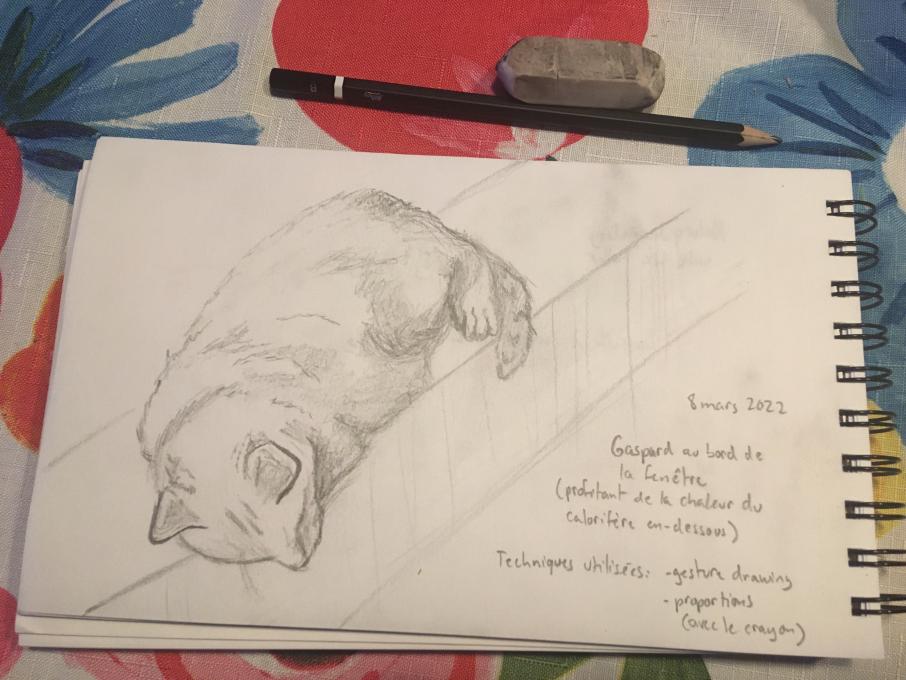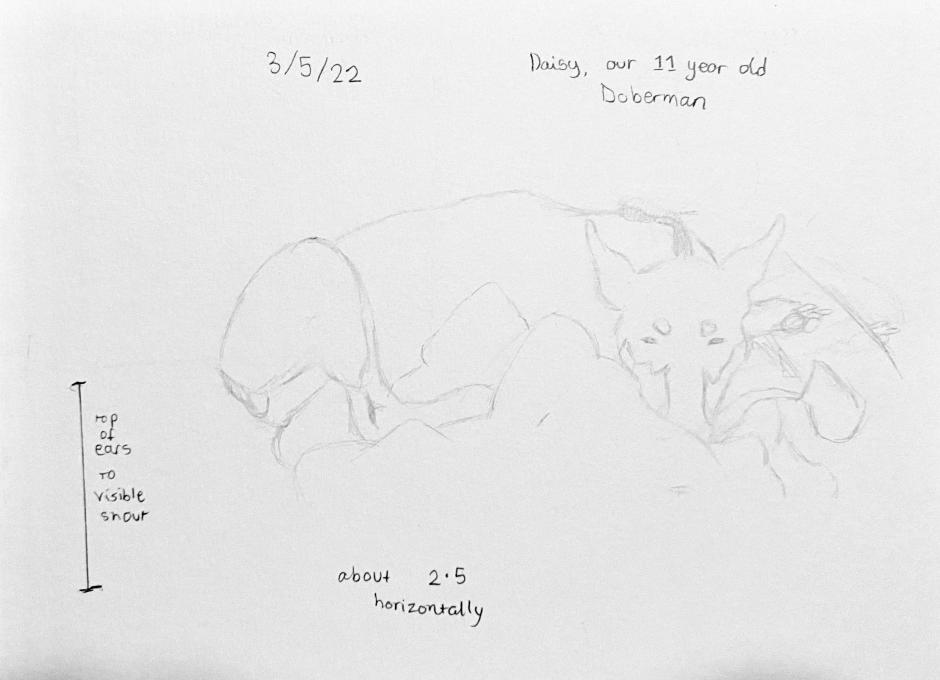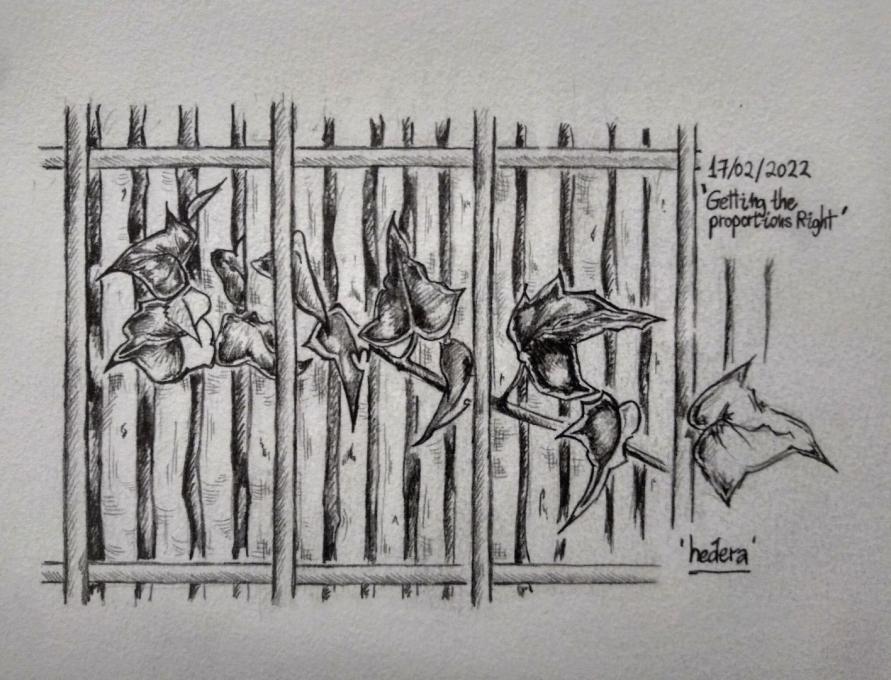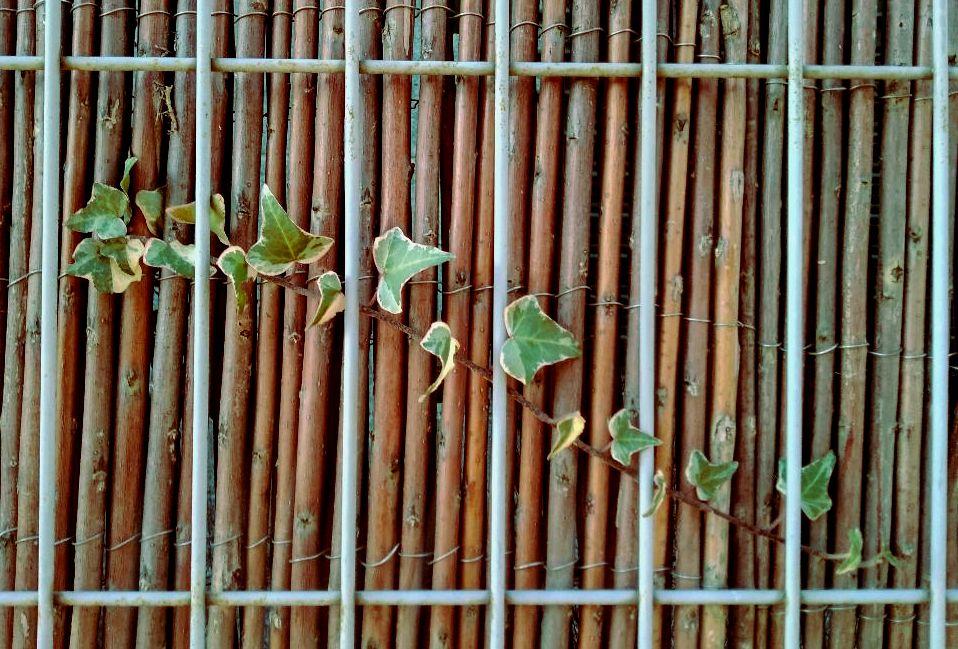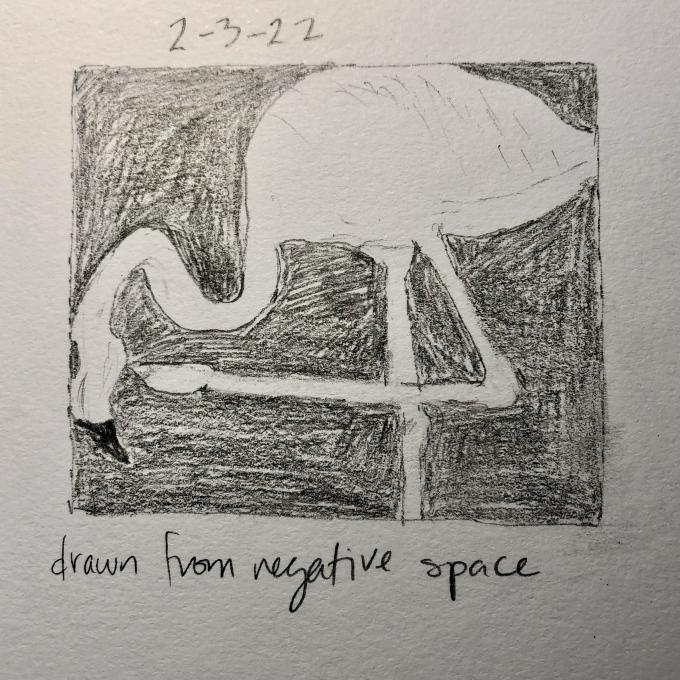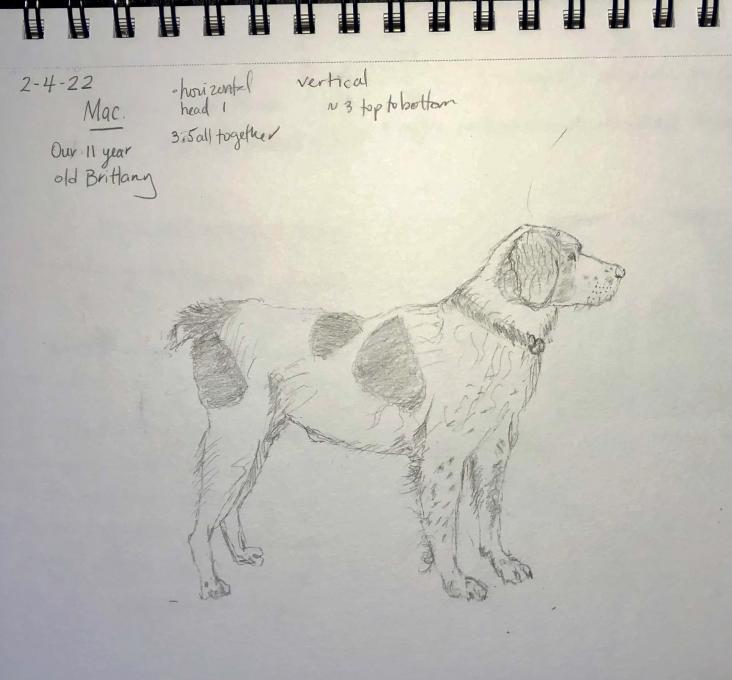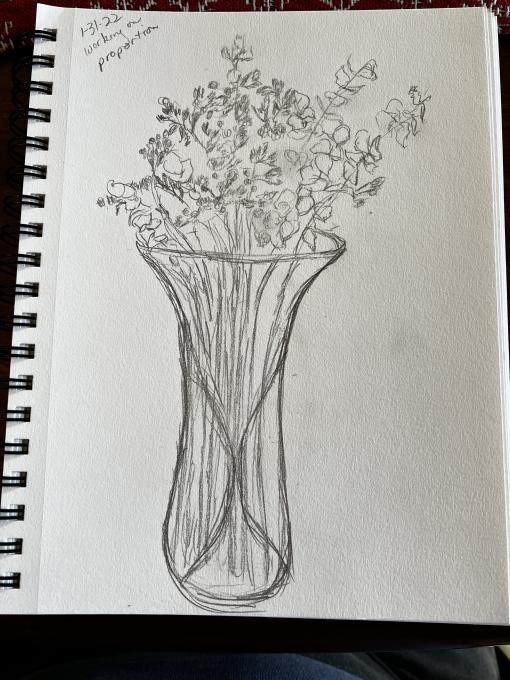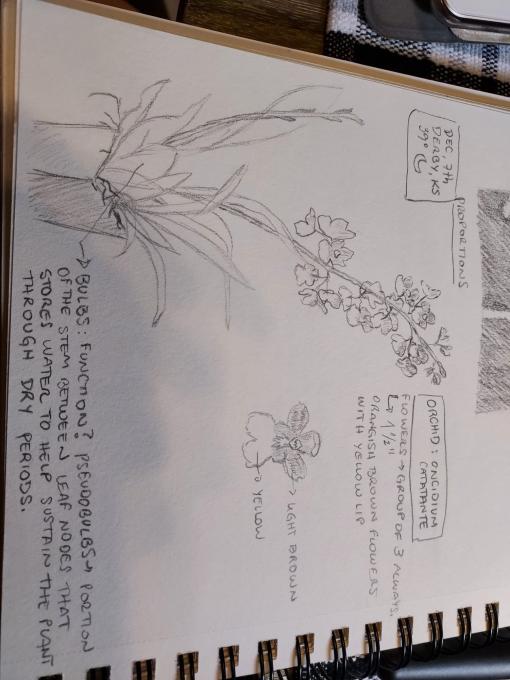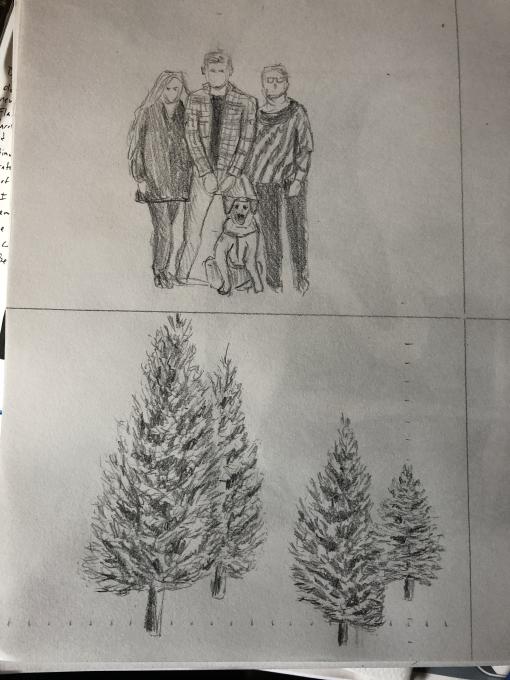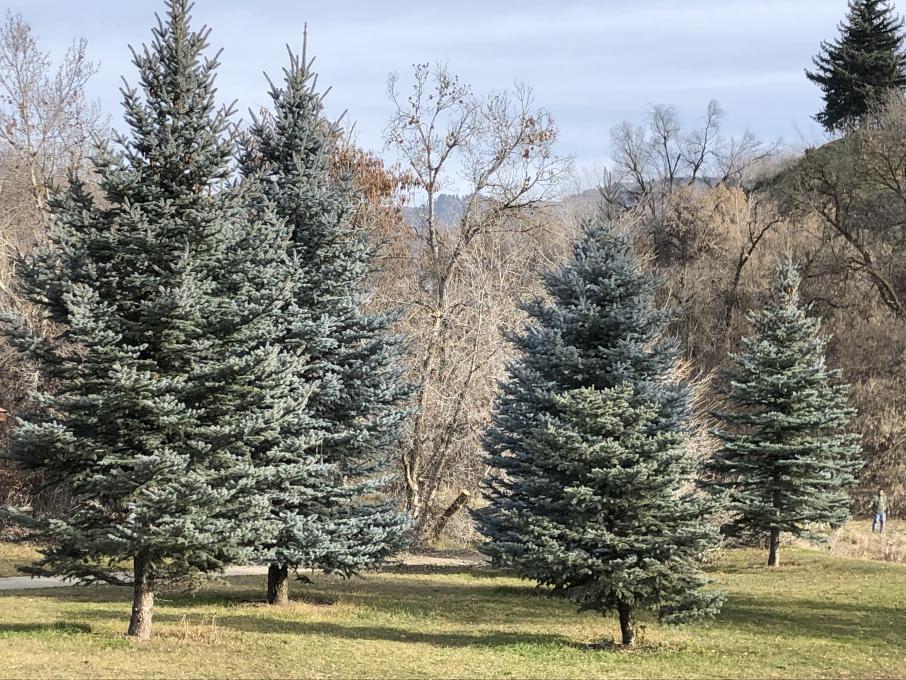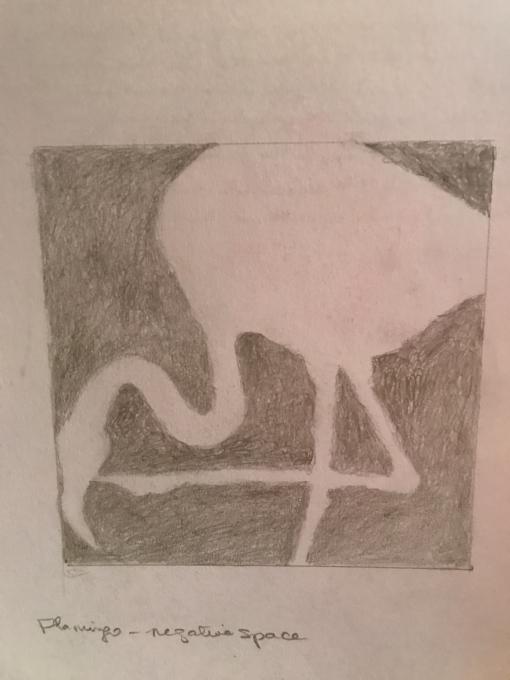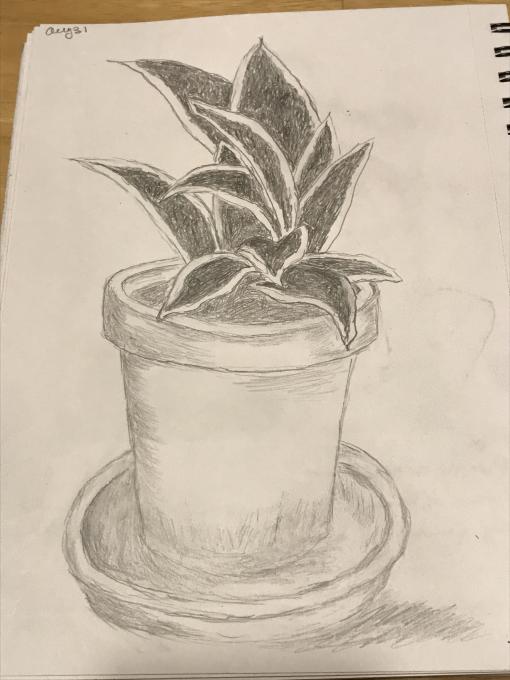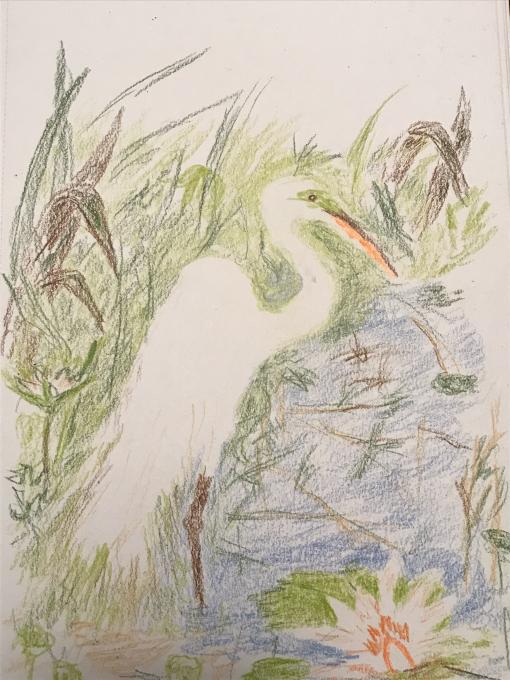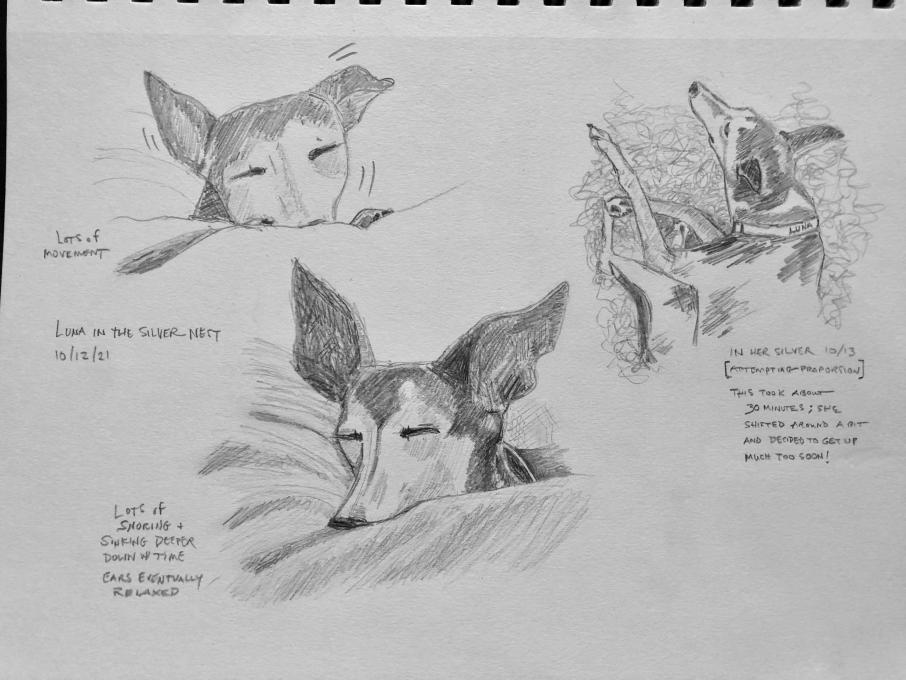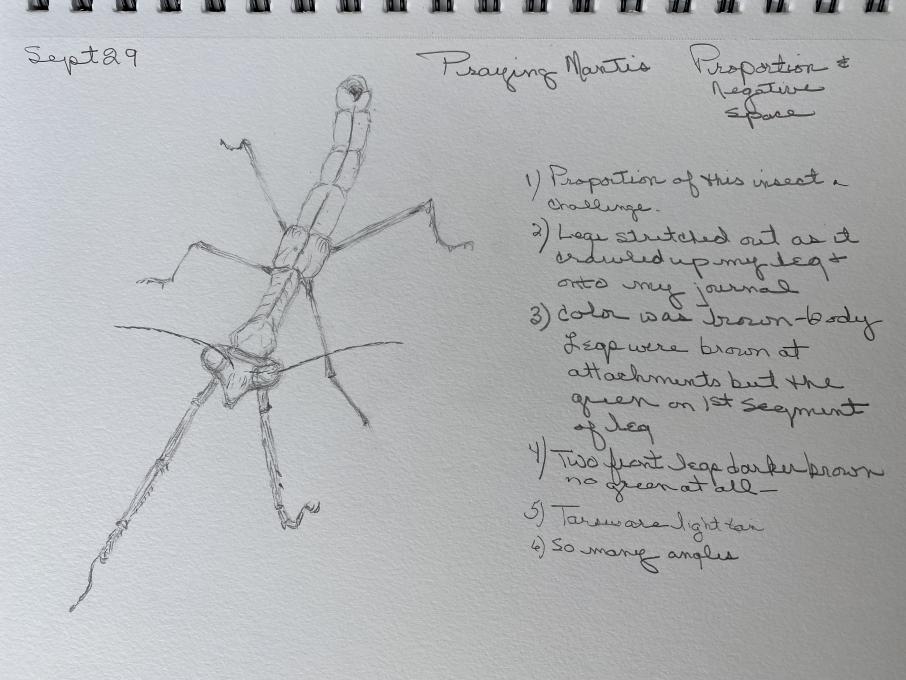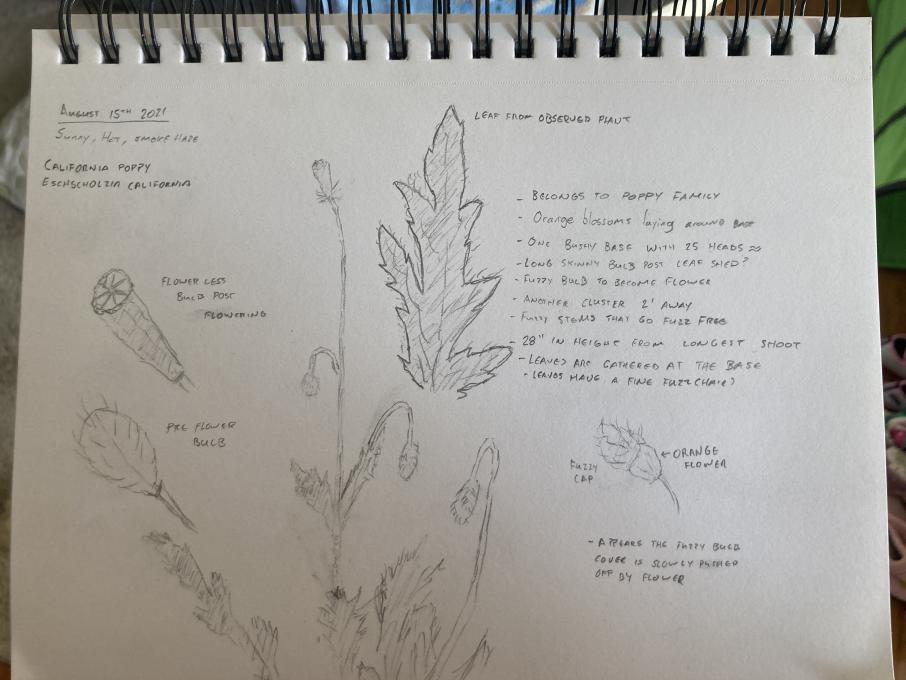The Cornell Lab Bird Academy › Discussion Groups › Nature Journaling and Field Sketching › Getting the Proportions Right
-

-
April 20, 2023. Here's my field sketch using the extended arm measuring tool. My learning note wasn't about proportion so much as about finding a way to simplify a landscape - I'm accustomed to putting in detail, and there was just too much going on here. I tried squinting, to pull out the lights and darks, but ultimately decided the light was pretty uniform. Onward!

-
April 18, 2023 - was chilly out today, so I wimped-out and sketched indoors. My still life was fun to arrange, with the objects adjacent to each other and then quite separated. I usually try to capture these positional relationships by eye, but the brain plays tricks and I found the measuring exercise very helpful. And the negative space awareness also helped get things positioned on the page. I think it will be a challenge to practice this in the field - but I'll give a landscape a try.


-
I like how you moved the objects around to show a difference in the proportions of each object
-
-
I Think that using this method really does help a lot with making the picture look proportionate. I know before I always had a problem with making it look realistic and I think that this is going to be a big help.

-
<li style="list-style-type: none;">
- <li style="text-align: center;">

-
I tried to measure the bird from the edge of it to the edge of the square. I then used a 'no copy blue pencil' for the birds out line. The last item was filling in the negative space. I should have just sketched the negative space and erased what did not work. I will try this again.
-
-
I tend to forget to check on the negative space as I am drawing. It will be a habit to develop, because it does help in accuracy when I use it.
-
This is a great method which I have been using for subjects but haven't for landscapes. I will have to tackle that next because it's my proportions that make my landscapes look like a 3 yr old sketched it!
It will be a challenge to use on a moving animal.
-
I think measuring proportion is a great tool for making things more accurate. I almost always draw something, and only use negative space to make it look right, but I think my drawings will become even more accurate using proportions! Animals are easier for me to use proportions on than landscapes so I guess I should practice that more.
-
Measuring proportions certainly shows up the errors in my accuracy. Particularly with masses of tall vegetation I found I overestimate the proportion significantly. My mind's eye must say "they are big tall trees" so I make them too big proportionally! It was hard to get things in the landscape looking real. The boat is still not right. Much more practice needed but at least I know I have a tendency to do that now which is better than not being aware.

-
That is awesome!
-
-
 I
I
I still found it a bit challenging to get the proportion just right. It is better but definitely a work in progress. I do think the measuring technique is beneficial and will improve the more I practice using it. -



-
I love how you used the color in the background for the flamingo!
-
Jane, how brilliant to reverse the image for Left-handed drawing! I also enjoyed you adding color as background!
-
-
For this exercise I chose to practice measuring proportions on my houseplants. I measured the height of each pot using a ruler and divided the length by 5 to get their height for my illustrations. Then the hight of the flower pots served as a reference for everything else. I used eyeballed or used the finger trick to get the width of each pot and the hight and width of each plant. For a change I drew these on toned paper with a Blick Terracotta color pencil and used a Prismacolor white color pencil for the highlights.

-

I am lucky I could practice with my sleeping cat! Although I applied the pencil technique right, I find that the back leg looks too small in proportion to the body… I wonder if perspective has something to do with it. -

The measuring of proportions helped me more accurately depict animals. If I were to use this in the field I feel that it would work perfectly for natural formations and plants, but for animals it has a downside. Unless the animal is very still or sleeping, it'd be a bit of a nuisance to try to use this on a moving animal. To answer the last question, yes it is easier to measure still objects more than moving ones. -
I recognize I didn´t use exactly
measury proportions technique´ to do this exercise, this morning walking down the street I took this photo, and I thought can be a good example to appreciate several proportions in the same image, and how amazing nature sometimes opposes resistance against any human architectural barrier, bringing us a beautiful and decorative vision while demonstrate it´s possible to weaving both, so to solve the draw, I took the straight lines as reference to calculate approximatelyhedera´ leaves different proportions.


-

-

-

The technique helped a lot to capture my subject more accurately. I practiced on some flowers in the house -
It helped a lot to measure the proportions with a simple tool like a pencil. I draw my orchid I have at home. I will use it next time for outside.

-
This is a really valuable tool to use in the field or anywhere. I have always struggled with getting the proportions right. This could work well with a still subject, but not so much, for a moving one. I feel like it is easier to do with plants in general and more difficult with any type of animals (especially humans) since we are so tuned in to how they should be portrayed accurately. Feels like there is more room with plants and more abstract subjects like landscapes.


-


Using negative space for the colored centers of these leaves was easy. The technique was more difficult to apply, and probably not as successful, when I tried to use it from the "outside in" to create the shape of the bird in the other picture. It was a real challenge to create the fringe of tail feathers by drawing in the background vegetation, for example. But I enjoyed seeing how far I could take it.

-
That came out nice!
-
-

-
Using the technique of pencil and ruler to measure was so helpful. While drawing the praying mantis,I don't think I
Would have come close to getting all the parts of the mantis in proportion to each other. I used the head to base my measurements on for the thorax, abdomen and legs. The praying mantis was very slow moving and climbed right up onto my journaling sketchbook. I was then able to snap a few pictures that helped me use my pencil and ruler for sizing. When doing the sketch of the praying mantis I referred to the picture I took and that helped immensely with negative space.So all in all I think the proportion is fairly close to being accurate but it will certainly take much more practice to become more proficient.
so all in all I think the proportion is fairly close to being accurate but it will certainly take much more practice to become more proficient
-

I actually really enjoyed this assignment, I’ve always had problems with proportions and this helped me build confidence with such a simple method. With fast moving birds or critters I had a much more difficult time but I’m certain that with practice I will be fine. With plants on the other hand a wondrous tool to have available. -
It has really helped to adjust my quick sketches and to focus more closely on details.
Read More:
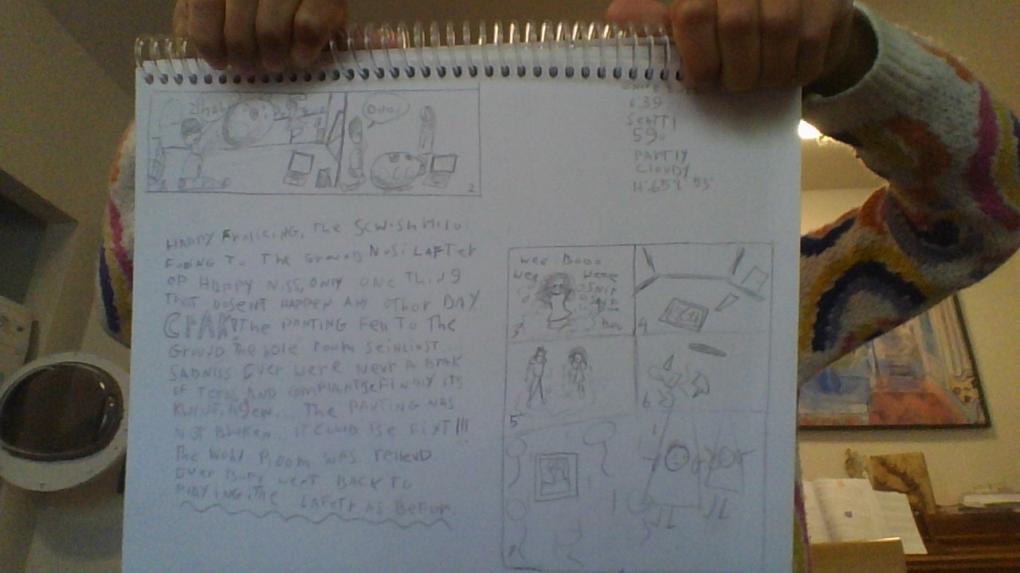
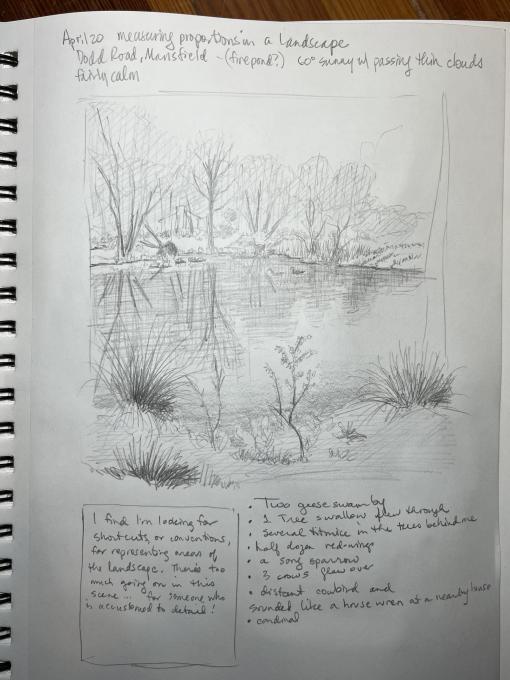
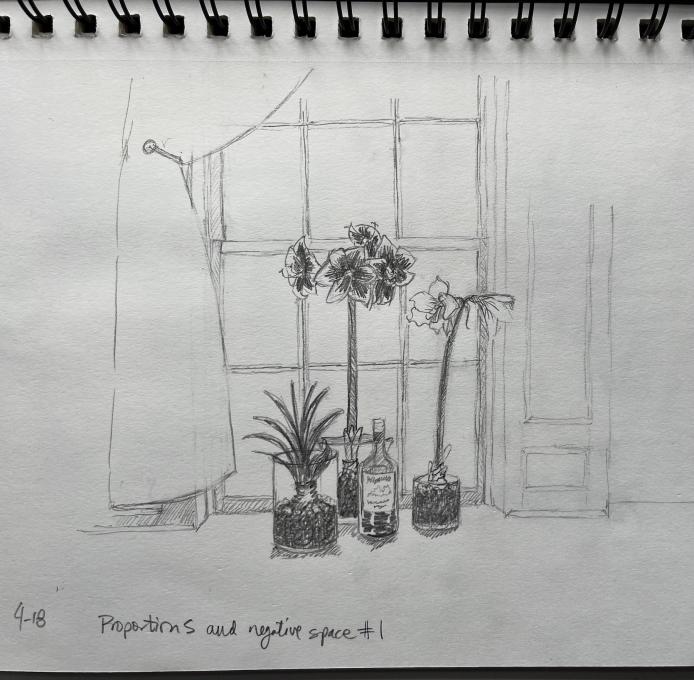
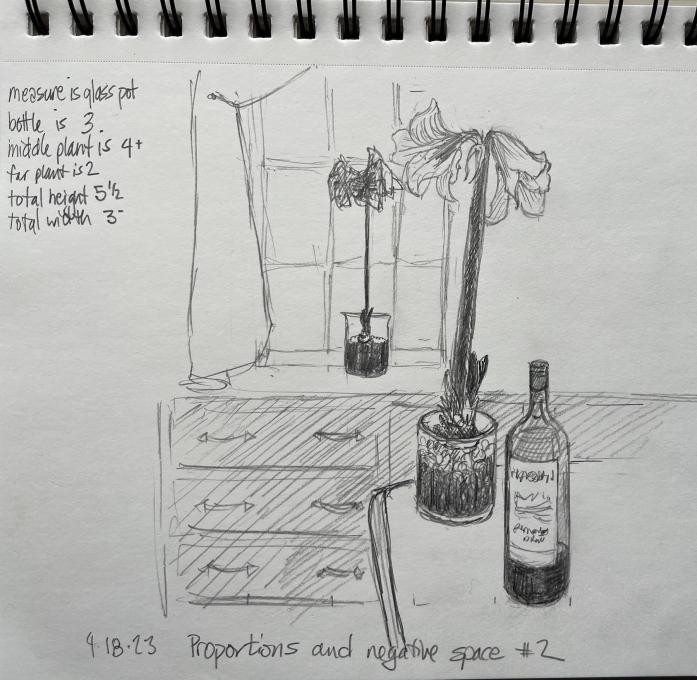
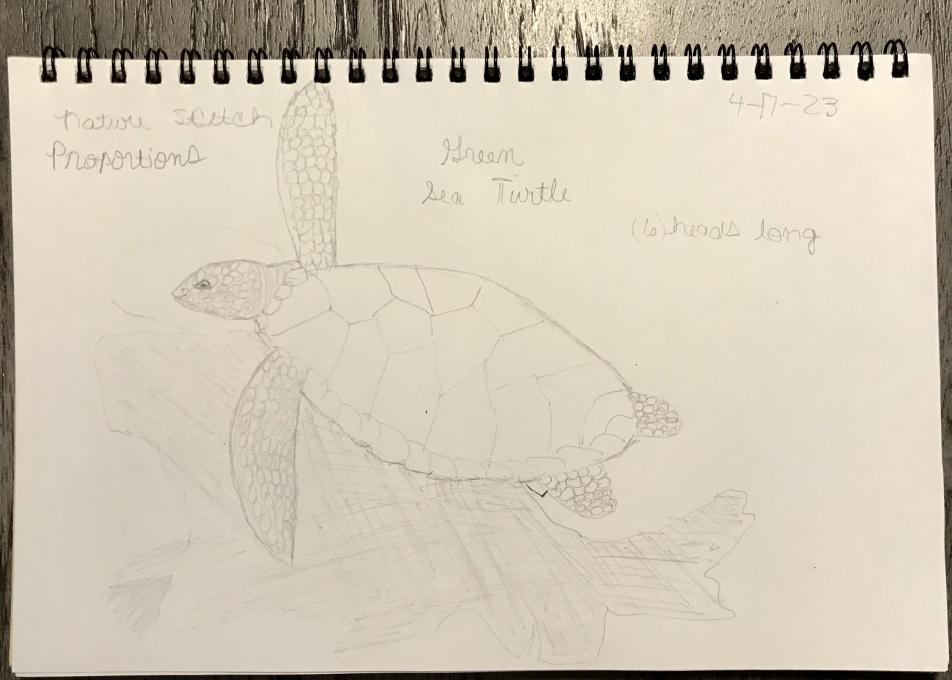
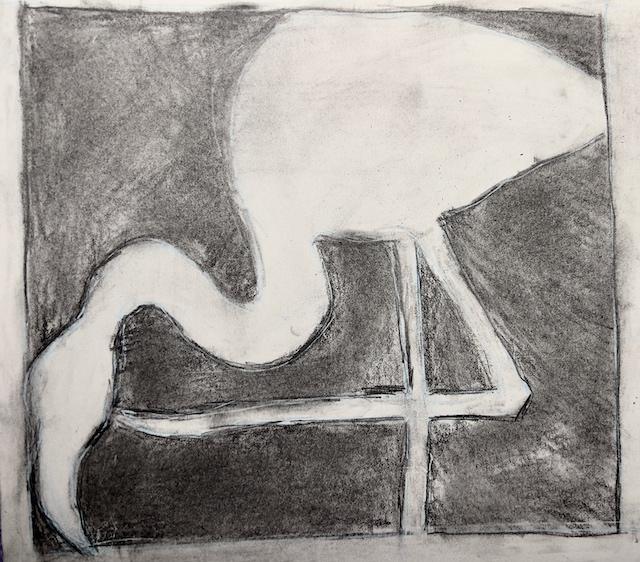
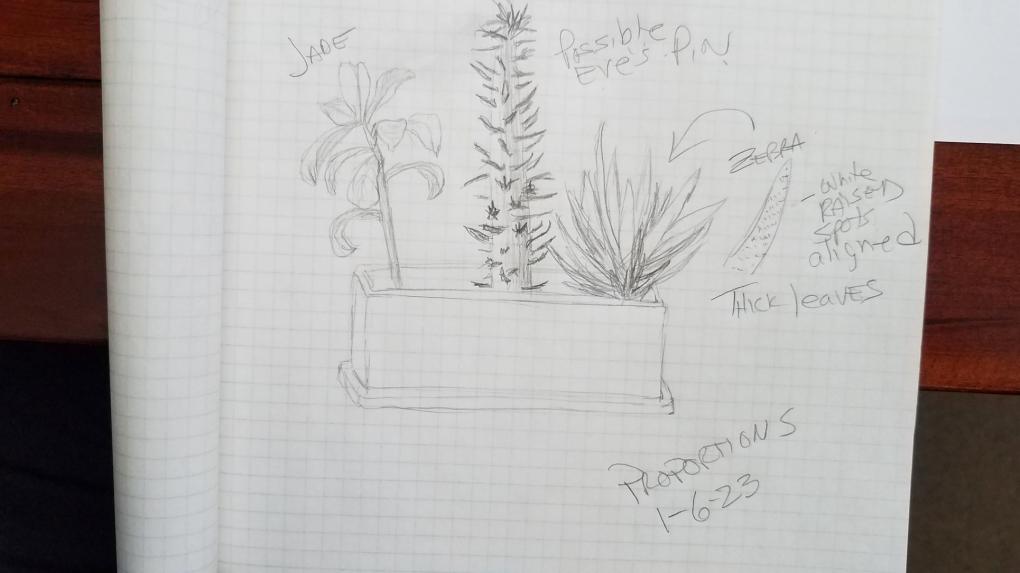
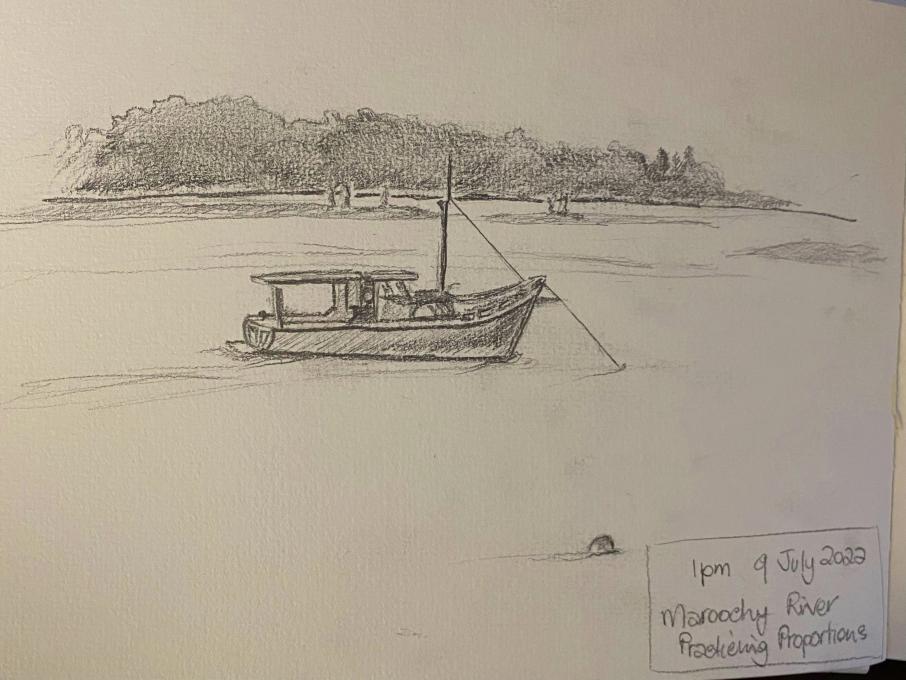
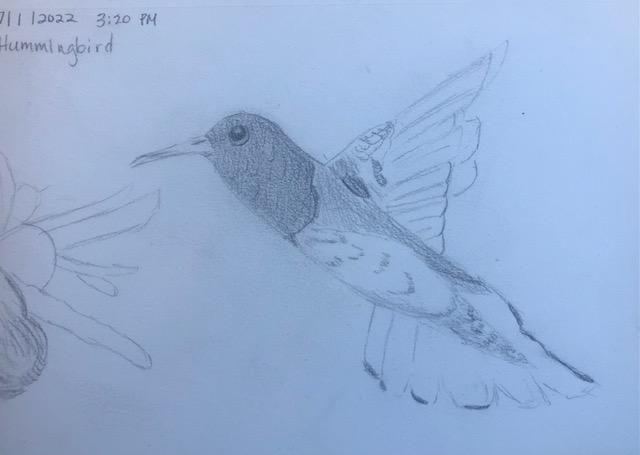 I
I